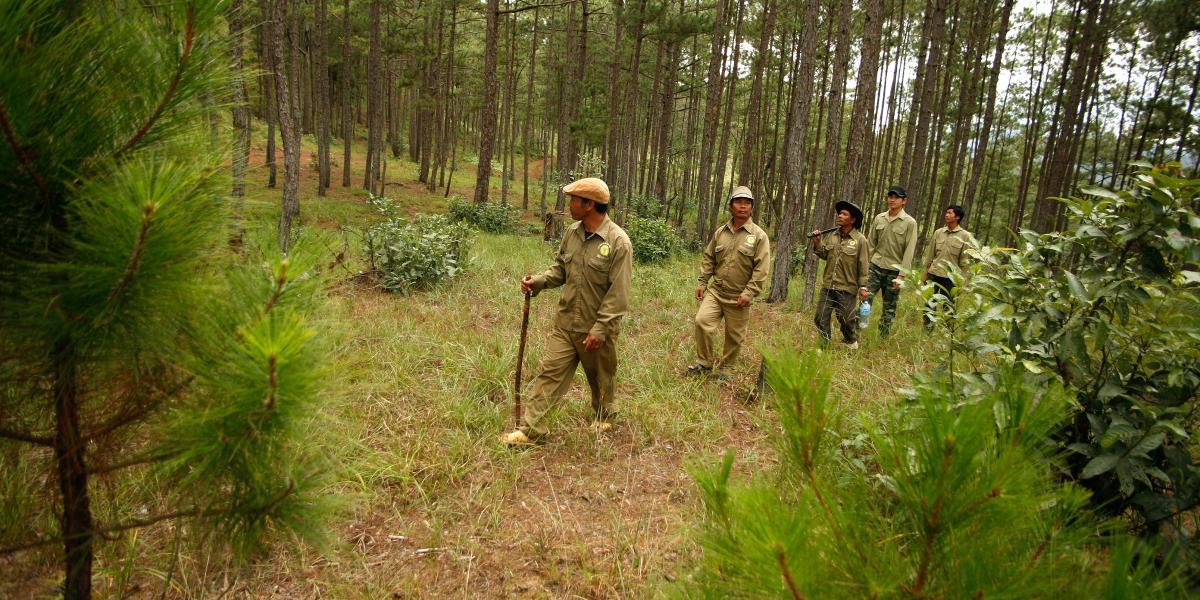
Insights gained from natural capital accounting can guide the design of projects and public policies.
Introduction
Although GDP is an important indicator that reveals the economic performance and income growth of a nation, it fails to indicate how natural resources have been utilized to achieve such growth. In many countries, substantial GDP growth has come at the expense of natural capital loss, yet this loss has never been officially and systematically measured. The lack of information regarding changes in the stock and flow of natural resources and ecosystems has resulted in misleading behaviors that sacrifice natural capital in exchange for an increase in GDP.
Natural capital accounting (NCA) is a practical tool that recognizes natural capital as an asset that should be measured alongside financial, human, and social capital. It has been increasingly adopted to complement GDP by reflecting the interdependent relationship between the economy and natural capital. Many countries have implemented natural capital accounting practices, and some advanced countries have established official accounts for several ecosystems in their national statistics, alongside other economic and social accounts.
What is natural capital accounting?
Natural capital accounting systematically quantifies the total stocks and flows of natural resources for a given ecosystem or a region. It collates both physical and economic measurements of ecosystems including their extent, condition, and the flows of services they provide to humans. Natural capital accounts provide an integrated view of the interdependence between the environment, the economy, and society.
Accounting practices can be conducted for: (i) individual environmental assets or resources such as timber, energy, water; (ii) entire ecosystem assets such as forest and wetlands; and (iii) biodiversity and ecosystem services such as air pollutant absorption, water retention, and recreation, among others. Currently, the System of Environmental-Economic Accounting (SEEA) is the official approach for conducting NCA, adopted by the United Nations Statistical Commissions (UNSC) in 2012. SEEA comprises five different accounts categorized into two types: physical accounts, which measure the extent and condition of ecosystems and the annual flow of ecosystem services, and the monetary accounts, which assign monetary values to ecosystem services and record the overall value of natural assets in terms of their capacity to produce future flows of services.
How does economic valuation of ecosystem services contribute to natural capital accounting?
The economic valuation of ecosystem services plays a crucial role in natural capital accounting, particularly in monetary accounts. It addresses a critical challenge: many ecosystem benefits are intangible and thus overlooked in decision-making processes. Economic valuation methods step in to quantify these non-market benefits and seamlessly incorporate them into monetary natural capital accounts. This integration enhances our understanding of the economic significance of these services.
Furthermore, ecosystems come in diverse forms, each with unique physical unit value. Water, energy, and soil, for instance, are distinct entities. Here, the economic valuation of ecosystem services in monetary natural capital accounts performs a unifying role by assigning a homogeneous unit value—dollar value—to this array of physical units. This standardized valuation approach allows for meaningful comparisons across different ecosystem types and between ecosystems conservation and economic activities.
What are the implications of natural capital accounting?
Information from natural capital accounting can have many implications in supporting the design of projects and public policies at all stages of the policy cycle. It can be used for ex-ante analysis to inform strategic upstream planning, prioritize investments, and, in conjunction with other tools, design policies and regulations needed to implement such plans. For example, investments can be prioritized in areas where the ecosystem account has high value or in specific ecosystems that are degrading.
NCA can also be used in interim or ex-post monitoring and impact evaluation of policies and regulations through a macro environmental-economic indicator. The physical accounts can assess and allocate resources across sectors more sustainably, while the monetary accounts can be used for cost-benefit analyses to identify trade-offs between economic and environmental outcomes.
Early and strategic thinking about natural capital frames the dependence on nature as a fundamental financial sustainability issue, thus switching the focus from improving environmentally friendly practices to truly safeguarding the stock and flow of natural capital.
What is the progress of NCA so far?
Natural capital accounting has been more advanced in several developed countries. The Netherlands and the United Kingdom are the two pioneers. These countries have successfully integrated natural capital accounting into their national accounting systems and facilitated the implications of natural capital accounts in government policy decisions and business actions.
For example, NCA was used in the transport sector in the UK to inform the development zones and infrastructure planning. Private companies are incorporating natural capital assessments into their sustainability reporting. Nestle is trading natural capital benefits generated from its sustainable farming practices. In the Netherlands, monetary environmental accounts are used to develop a green growth indicator to measure policy instruments. Other countries such as Australia, New Zealand, and USA are progressively catching up with many national policy actions and strategies to facilitate the implementation and implications of natural capital accounting across sectors and stakeholders.
Developing countries have made progress in piloting NCA practices. For example, the People’s Republic of China (PRC) has developed a Gross Ecosystem Product (GEP) indicator based on SEEA approach and piloted it in more than 150 counties. The government has promoted GEP implications in several areas including spatial land-use planning, governance performance evaluation, eco-compensation scheme designing and evaluation, and ecological product development. In the Philippines, initial progress has been achieved in developing accounts for mangrove ecosystems and regional ecosystem accounts. Indonesia has leveraged NCA data to improve national spatial planning and inform the country’s Intended Nationally Determined Contributions.
How to increase the implementation of NCA in developing countries?
While developed countries possess both technical and financial capacity to advance natural capital accounting, developing countries may require additional assistance. Regional and global initiatives play a crucial role in expanding NCA practices in these countries. Initiatives such as WAVEs and the Natural Capital Lab have achieved initial success in introducing and piloting NCA in several developing countries. Establishing a knowledge-sharing platform to disseminate evidence and lessons from peers facilitates the replication of NCA practices in similar geographic contexts. In addition, capacity building, technical support, training programs, and investments in data monitoring technology are essential for scaling up the successful outcomes of NCA and integrating them into decision-making processes.
This article is the third installment of the “valuing nature” explainer series. It is ideal to read the first and second pieces before proceeding with this one.

Lan N. Le
Environmental Economist, Agriculture, Food, Nature, and Rural Development Sector Office, Sectors Group, Asian Development Bank

Christian Fischer
Knowledge Management Specialist (Consultant)

Narayan Iyer
Senior Natural Resources and Agriculture Specialist, Agriculture, Food, Nature, and Rural Development Sector Office, Sector Group, ADB
This blog is reproduced from Development Asia.







